Syria conflict: IS advances on ancient ruins of Palmyra
- Published
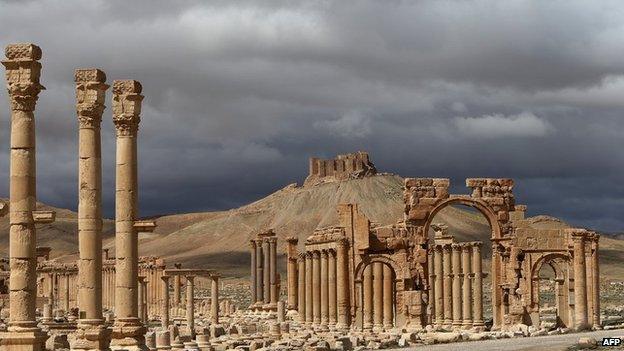
Rising out of the Syrian desert, Palmyra contains the monumental ruins of a great city
Palmyra, one of the archaeological jewels of the Middle East, is said to be under threat from Islamic State (IS) militants in Syria.
The jihadists seized buildings on the eastern edge of the adjacent city of Tadmur on Thursday, but their push was reportedly halted by the Syrian army.
Syria's antiquities chief warned that if IS seizes the Unesco World Heritage site, external it will destroy everything there.
The group has ransacked and demolished several ancient sites in Iraq.
Palmyra has already suffered some damage during the four-year civil war.
It is situated in a strategically important area on the road between the capital, Damascus and the contested eastern city of Deir al-Zour, and close to gas fields
'International catastrophe'
On Thursday, the Syrian Observatory for Human Rights said that IS militants were mounting an assault on Tadmur, the modern town next to the ruins of Palmyra.
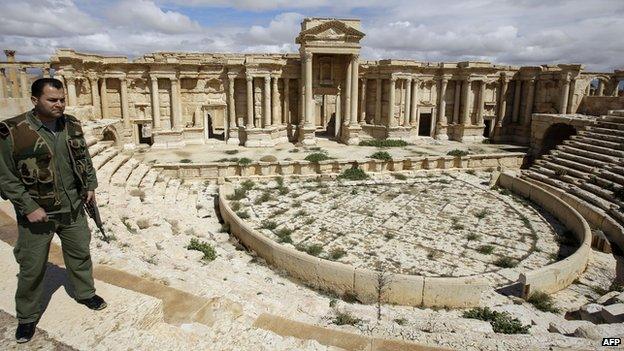
The government-controlled area is close to gas fields and lies on a key road
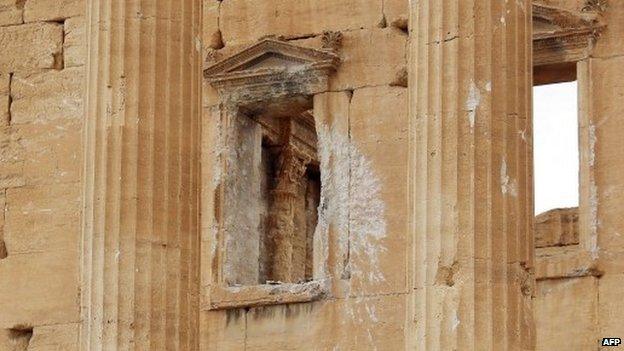
Palmyra has already suffered some damage during the four-year civil war
Twenty-six civilians in a village outside Tadmur were summarily killed by IS - at least 10 by beheading - on Thursday after being accused of collaborating with President Bashar al-Assad's government, Mr Abdul Rahman said.
IS itself claimed on Twitter that it had taken control of northern and eastern parts of Tadmur, and that it had shot down a Syrian air force MiG jet in the area.
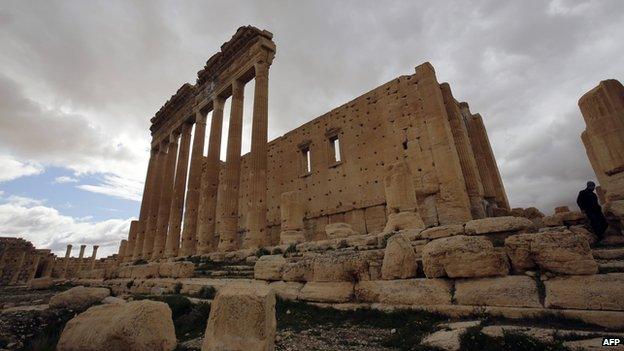
The Temple of Bel is the most complete structure left in Palmyra
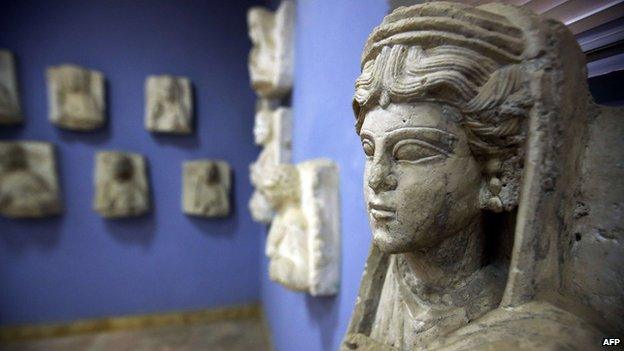
The local museum contains busts and reliefs from Palmyra's many funerary towers
Homs provincial governor Talal Barazi confirmed that al-Sukhanah, a town to the north-east, had fallen on Wednesday and said 1,800 families from the town were sheltering in Tadmur.
The Syrian Observatory said more than 70 soldiers and 40 militants had been killed in the battle for al-Sukhanah.
Rising out of the desert and flanked by an oasis, Palmyra contains the monumental ruins of a great city that was one of the most important cultural centres of the ancient world, according to Unesco.
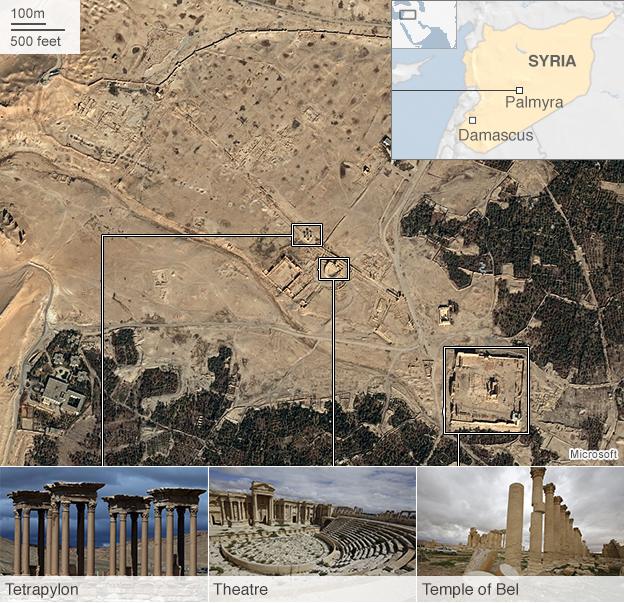
The site, most of which dates back to the 1st to the 2nd Century when the region was under Roman rule, is dominated by a grand, colonnaded street.
At the southern end of the 1.1km street is the great temple of Bel, considered one of the most important religious buildings of the 1st Century in the East and of unique design.
Syria's director of antiquities, Maamoun Abdul Karim, said that if Palmyra were to fall to IS, it would be an "international catastrophe".
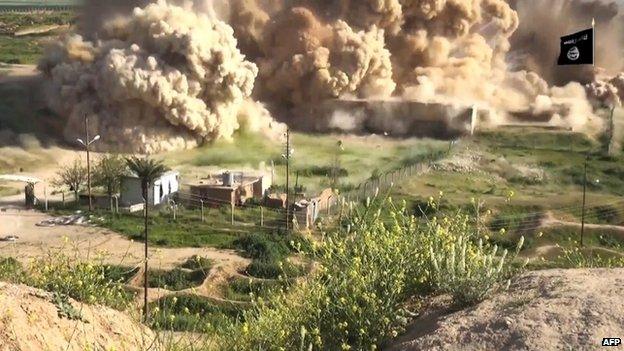
Islamic State published a video last month showing the ancient site of Nimrud being blown up
"It will be a repetition of the barbarism and savagery which we saw in Nimrud, Hatra and Mosul," he told AFP news agency.
The ancient sites in northern Iraq were recently blown up by IS militants, who control swathes of territory on both sides of the Syria-Iraq border.
A US-led coalition has carried out air strikes on the jihadist group's positions since September. However, it says it does not co-ordinate its actions with the Assad government.